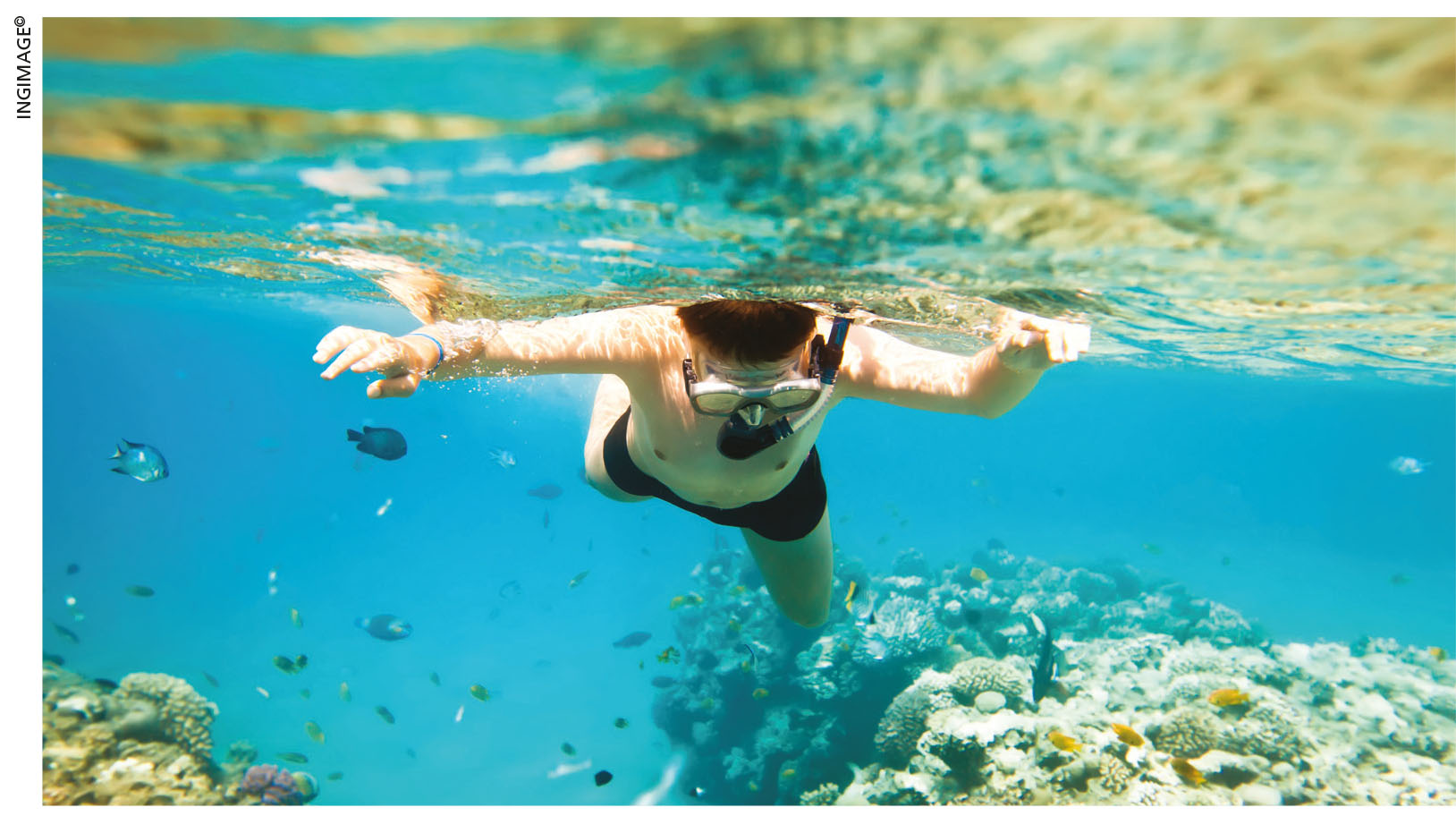MARINE TOURISM
RAINFORESTS OF THE SEA
Janaka Perera underscores the potential of an emerging avenue for tourism
The Space and Underwater Tourism Universal Summit (SUTUS) will take place in Marbella, Spain, on 24 and 25 March next year with more than 90 countries expected to participate. Underwater tourism is expanding the accessibility of the ocean to travellers, offering them the chance to see the marine world that encompasses about 70 percent of the planet.
Sri Lanka undoubtedly possesses immense potential in this sphere with fascinating landscapes that can be found underwater in coral reefs – often referred to as ‘rainforests of the sea.’
According to the Professional Association of Diving Instructors, there are around six million active scuba divers worldwide engaging in various forms of diving. This includes exploring shipwrecks and underwater caves, observing aquatic plants and animals, and commercial and military diving.
The most common form of scuba diving is recreational diving, which is enjoyed at depths of less than 39 metres where divers can make a straight ascent to the surface. In general, they seek locations where the water is clear, temperatures are warm and marine life plentiful.
Divers often choose to visit areas with coral reefs because they’re colourful and dense with life, and provide shelter for many types of fish. Wrecks and reefs draw the attention of divers intent on immersing themselves in this unique underwater experience.
Among the challenges is constructing hotels and buildings underwater. The Maldives has exploited the tourism potential in this area to the maximum – it even offers submarine tours.
Conrad Maldives Rangali Island – an underwater hotel – was opened in 2018. On board a submarine, the traveller descends to a submerged reef 45 metres beneath the surface. On the way down, the visitor sees a colourful display of corals and different types of reef fish. Depending on currents, the submarine beaches on a sandy spot near a big cave. The submarine’s exterior lights enable tourists to view the different types of fish taking shelter inside the cave.
Although spearfishing and coral reef exploration were the primary aims of scuba divers, searching for wrecks soon became their pastime in seas strewn with shipwrecks.
The popularisation of scuba diving following World War II had an impact on Sri Lanka when Sir Arthur C. Clarke and Mike Wilson (later Swami Siva Kalki) visited the island after their successful expedition to the Great Barrier Reef.
They came here to write ‘The Reefs of Taprobane: Underwater Adventures Around Ceylon.’ The authors were joined by Sri Lanka’s top scuba diver, underwater explorer and marine biologist the late Rodney Jonklaas.
Tourism linked to studying maritime archaeology is an important area. Shipwrecks have been a fascinating subject for a variety of reasons, the study of archaeology, marine life and treasure hunts among them. A ship at the bottom of the ocean is a time capsule as history stands still in a sunken vessel.
In 1964, Clarke and Wilson discovered a 17th century wreck of a Dutch vessel with a cargo of silver coins and bronze canon. The authorities promptly designated the site an archaeological reserve. The discovery of this genuine treasure ship marked the advent of Sri Lanka’s maritime archaeology.
Around 100 wrecked ships lie at the bottom of the sea around Sri Lanka although no proper records of these ill-fated vessels have been maintained. A large number are legacies from the colonial past. Around the Bay of Galle alone are over 20 shipwreck sites – some possibly dating to the 10th century.
Several decades ago, Jonklaas made headlines with his sensational discovery off Elephant Island in Trincomalee, which he described as a British warship that was well over 200 years old. Previously, he came across an ancient galleon off the
Great Basses Reef on Sri Lanka’s southeast coast.
The joint Sri Lanka-Australia-Netherlands Maritime Archaeological Research Programme operates from the Galle Harbour precinct, which has been the subject of underwater archaeological surveys since 1992. It was a book by Clarke that initially published colour photographs of offshore shipwrecks and the ruins of the Temple of a Thousand Columns in the sea.
However, we have to keep in mind that a powerful global commercial financial combine is hovering over shipwrecks. Salvaging them has become a game played for very high stakes. A foreign company once attempted to obtain rights from the Sri Lankan government to salvage wrecks off the Great Basses Reef.
It was from these wrecks that Clarke removed 115 pounds of silver in 1961, a portion of which he donated to the Smithsonian Institute. In the early 1980s, a British couple who posed as tourists was caught trying to smuggle two bronze cannons they had illegally removed from the wreck of the L’Orient in Trincomalee Bay.
Sri Lanka has to gear itself to monitor, evaluate, study and safeguard this wealth of archaeological materials.




